Blogs
Our Latest Blogs
Transform your outdoor space with expert fencing, durable decking, and precision mowing services, ensuring beauty, privacy, and perfection.
How to Dispose of Hard Rubbish Items Responsibly
Hard rubbish removal can be difficult to deal with if you do not know the right way to dispose of it. Many households in Melbourne face the same challenge every year when they need to get rid of large or bulky items. Knowing your options and choosing the responsible way helps keep the city clean, saves landfill space, and even supports recycling and reuse. This guide explains what counts as hard rubbish, which services are available in Melbourne and Victoria, how to prepare your items, and the practical steps to follow for responsible disposal. What Counts as Hard Rubbish Hard rubbish refers to bulky household items that do not fit into your regular bins. These items are often too large, heavy, or awkward for weekly kerbside collection. Common examples include: Old mattresses and bed frames Sofas, lounges, and chairs Whitegoods such as fridges, washing machines, and ovens Broken furniture like tables and wardrobes Electronics and televisions Outdoor equipment and tools Carpets, rugs, and floor coverings These items can quickly take up space in your home or garage. Many contain materials that can be reused or recycled if handled correctly. Council Services in Melbourne and Victoria Most councils across Melbourne provide a hard rubbish collection service to residents. The details vary depending on your local council. Some councils allow one or two free collections each year. Others issue tip passes so you can take your items directly to a transfer station. Many councils also run dedicated drop-off centres where residents can leave appliances, e-waste, or large furniture. Some of these centres have sorting systems to ensure items are recycled where possible. If you are not sure about your council’s service, check their website or call their customer service team. Knowing the exact rules will help you avoid leaving items outside on the wrong date or in the wrong place. Best Practices Before Disposal Before you place bulky items out for collection or book a rubbish removal service in Melbourne, it helps to prepare them. This makes the process safer, quicker, and more efficient. Clean your items so they are free from food, liquids, or sharp debris. Dismantle large furniture like wardrobes, shelving, or beds so they are easier to handle. Remove recyclable parts such as metal frames, cords, or glass panels and keep them separate. Check safety issues on appliances by making sure doors are detached and cords secured. These simple steps reduce hazards for collection teams and increase the chance of recycling. Four Steps for Responsible Hard Rubbish Removal Step 1. Assess and sort your items: Start by identifying what you need to throw out. Group similar items together such as metals, electronics, or furniture. Sorting early makes the later stages smoother. Step 2. Consider donation or selling first: If items are still usable, think about giving them away to charities, op shops, or selling on platforms like Gumtree or Facebook Marketplace. Step 3. Arrange for recycling or specialised services: Whitegoods, e-waste, and mattresses have dedicated recycling programs. Using these ensures valuable materials are recovered. Step 4. Utilise municipal bulky waste collection: Book your council’s hard rubbish collection service or hire a professional rubbish removal service in Melbourne for larger loads. Why Responsible Disposal Matters Responsible hard rubbish removal is more than just getting rid of clutter. It has long-term benefits for the environment and the community: Reduces landfill waste and conserves space Keeps reusable materials like timber, metal, and plastic in circulation Prevents hazardous items such as e-waste from causing soil and water pollution Improves neighbourhood appearance and prevents illegal dumping Supports local recycling industries and creates jobs Affordable Rubbish Removal Options in Melbourne Not everyone has the time or vehicle to manage bulky waste themselves. If your council collection is not enough, consider professional rubbish removal services near you. Expert rubbish removal providers handle everything from pickup to sorting and disposal. Many focus on recycling and keep costs affordable by charging only for the space your items take in the truck. When searching for a rubbish removal service near you, look for licensed and insured companies. Ask if they recycle and how they handle different materials. Choosing a trusted provider means you can be confident your hard rubbish is disposed of responsibly. Frequently Asked Questions (FAQs) 1. What is considered hard rubbish in Melbourne? Hard rubbish includes bulky household items like mattresses, furniture, whitegoods, electronics, and large appliances that cannot go in regular bins. 2. How often do councils in Melbourne collect hard rubbish? Most Melbourne councils offer one or two free hard rubbish collections per year. Some also provide tip passes or drop-off centres for bulky waste. 3. Can I recycle appliances and whitegoods instead of throwing them away? Yes. Appliances such as fridges, ovens, and washing machines can be recycled for their metal, plastic, and electronic parts through specialised recycling services. 4. What should I do before putting hard rubbish out for collection? Clean your items, dismantle large furniture, remove recyclable parts, and make sure appliances are safe by detaching doors and securing cords. 5. Is professional rubbish removal better than council collection? Council collections are useful for limited items, but professional rubbish removal in Melbourne is faster, more flexible, and ensures recycling is done properly. 6. Can I donate furniture or appliances instead of disposing of them? Yes. If the items are still usable, consider donating them to charities, op shops, or offering them through community marketplaces before disposal. Final Thoughts Hard rubbish removal does not need to be stressful. With council services, recycling programs, and professional help available, Melbourne residents have plenty of options to manage bulky waste responsibly. Start by sorting your items, consider reuse first, and then choose the right disposal method. At Skynature, we understand the importance of responsible rubbish removal in Melbourne. Our team provides reliable and affordable rubbish removal services that prioritise recycling and safe handling. Whether it is an old mattress, broken furniture, or outdated appliances, we make sure your hard rubbish is cleared responsibly. We love to hear from you Contact Us
- 20 September, 2025
- 7 min Read
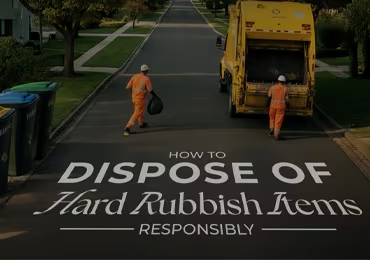
Stone Decking in Victoria, Australia: The Ultimate Guide to Durable & Stylish Outdoor Spaces
Outdoor living is a big part of the Australian lifestyle, and homeowners across Victoria are always searching for durable, low-maintenance, and stylish decking solutions. While timber and composite decks remain popular, stone decking in victoria australia is quickly gaining attention for its timeless beauty and ability to withstand Australia’s diverse climate. In this guide, we’ll explore why stone decking is a smart choice, the best materials available, and tips for maintaining your deck in top condition. Why Choose Stone Decking in Victoria? Victoria’s climate can be unpredictable—hot summers, chilly winters, and rainy coastal conditions mean outdoor spaces need materials that last. Here’s why stone decking stands out: Weather resistance: Unlike timber, stone doesn’t warp, rot, or attract termites. Low maintenance: Minimal cleaning and sealing compared to wood. Aesthetic appeal: A natural, elegant look that complements both modern and traditional homes. Longevity: With proper installation, stone decks can last for decades. Types of Stone Decking Materials Not all stone is created equal. Choosing the right material depends on your design, budget, and lifestyle needs. Bluestone: Popular in Victoria, known for its durability and non-slip surface. Granite: A premium option, extremely hard-wearing and stylish. Sandstone: Softer underfoot, with warm tones ideal for garden settings. Porcelain Pavers: A modern alternative, lightweight yet strong, resistant to staining. Tip: Always choose a stone that suits your outdoor usage. For poolside decking, slip-resistant options like bluestone or textured porcelain are best. Stone Decking vs. Other Decking Materials Wondering how stone compares to other options? Stone vs. Timber: Timber looks warm but requires constant maintenance; stone is sturdier and termite-proof. Stone vs. Composite: Composite is eco-friendly and stylish, but stone offers unmatched natural appeal and longer lifespan. Stone vs. Concrete: Concrete can crack over time, while stone is more durable and visually appealing. By weighing these factors, many Victorian homeowners see stone decking as a smart, long-term investment. Cost & Installation Factors While stone decking may have a higher upfront investment than timber or composite, it offers long-term savings. Key factors that influence cost include: Type of stone selected Size and complexity of the deck design Labour and installation techniques Site preparation (leveling, drainage, etc.) Pro tip: Think of stone decking as a “once in a lifetime” investment. Unlike timber, it doesn’t need frequent replacement. Maintenance Tips for Stone Decking Keeping your stone deck looking great is easier than you think: Regular cleaning: Sweep off leaves and debris to prevent staining. Gentle washing: Use mild soap and water; avoid harsh chemicals. Sealing (if needed): Some stones benefit from sealing to enhance durability. Algae & moss control: A quick clean in wet months prevents slippery surfaces. With basic care, your stone deck can stay beautiful for decades. Best Uses of Stone Decking in Victoria Stone decking is versatile and works beautifully in different outdoor areas: Pool surrounds: Slip-resistant and heat-tolerant surfaces. Patios & courtyards: Elegant entertaining spaces. Garden walkways: Blends naturally with landscapes. Outdoor kitchens: Durable surface for high-use areas. No matter your outdoor design goals, stone decking adds both functionality and visual appeal. Frequently Asked Questions (FAQs) 1. Is stone decking good for the Australian climate? Yes. Stone is naturally resistant to heat, rain, and pests, making it ideal for Victoria’s changing weather. 2. What is the most durable stone for decking? Granite and bluestone are among the most durable, withstanding heavy use and harsh climates. 3. Does stone decking get hot in summer? Lighter-coloured stones like sandstone and porcelain reflect heat better and stay cooler underfoot. 4. Can stone decking be slippery when wet? Most outdoor-grade stone is textured for slip resistance, but proper sealing and cleaning also reduce slipperiness. 5. How long does stone decking last? With correct installation, stone decking can last 20–50 years, far longer than timber alternatives. Conclusion Stone decking is one of the smartest choices for homeowners in Victoria who want durability, low maintenance, and timeless style. From pool surrounds to patios and walkways, stone elevates outdoor living spaces while adding long-term value to your property. Looking for expert stone decking installation in Victoria, Australia? At Skynature, we specialise in designing and building custom stone decks that blend beauty with functionality. Contact us today to discuss your project and create an outdoor space that lasts for decades. We love to hear from you Contact Us
- 13 September, 2025
- 5 min Read

6 Native Australian Plants That Thrive in Low-Maintenance Gardens
Creating a beautiful, sustainable garden while minimizing ongoing effort is an achievable goal for gardeners in Victoria and throughout Australia. With the right selection of native Australian plants, you can enjoy an attractive garden that flourishes with low water, low feeding, and minimal pruning requirements. Native plants are adapted to local soil and climate conditions, making them naturally resilient. This guide discusses some of the best native Australian plants that thrive in low-maintenance gardens and practical tips for designing your easy-care green space. Why Choose Native Australian Plants? Climate Adaptation: These plants have evolved to withstand Australia’s diverse climate ranges, from dry spells to cooler seasons in Victoria. Water Efficiency: Once established, native plants usually need significantly less irrigation than exotic species. Pest and Disease Resistance: They naturally resist many pests and diseases, reducing the need for chemical treatments. Support for Local Wildlife: Native plants attract pollinators, birds, and beneficial insects, enhancing biodiversity. Lower Maintenance: Most natives require less pruning and feeding, saving time and resources. By supporting local ecosystems, your garden not only looks vibrant but also contributes positively to environmental conservation. Top Native Australian Plants for Low-Maintenance Gardens Here are some resilient and visually appealing native plants ideal for Victoria’s low-maintenance gardens: Lomandra (Lomandra longifolia): Tough, drought-tolerant, and adaptable with dense foliage perfect for borders and weed suppression. Kangaroo Paw (Anigozanthos spp.): Striking claw-shaped flowers that attract nectar-feeding birds; thrives in sunny, well-drained spots. Grevillea (Grevillea spp.): Colorful flowers loved by pollinating birds; thrives in poor soils and drought conditions. Westringia (Westringia fruticosa): Evergreen shrub resistant to drought and frost; ideal for hedges and mass plantings. Bottlebrush (Callistemon spp.): Iconic red flowering spikes; attracts native birds and requires little care beyond pruning. Correa (Correa spp.): Bell-shaped flowers blooming in autumn/winter; suitable for shade and drought conditions. Designing Your Low-Maintenance Native Garden: Practical Tips Group Plants by Water Needs: Cluster similar plants to optimize irrigation. Use Mulch Liberally: Helps retain moisture, suppress weeds, and regulate soil temperature. Improve Native Soils Thoughtfully: Add organic matter where needed to boost plant health. Limit Lawn Areas: Replace with native ground covers or hardscaping to cut maintenance. Plan for Seasonal Variety: Mix species to ensure year-round foliage and blooms. Local Benefits: Why Low-Maintenance Native Gardens Suit Victoria Gardening with natives suited to Victoria's temperate climate ensures resilience through warm summers and cool winters. It reduces reliance on intensive irrigation, supports local flora and fauna, and creates authentic Australian landscapes that are both functional and beautiful. Supporting Biodiversity Through Native Plant Choices By choosing native plants, gardeners provide food and habitat for wildlife. Grevillea and Kangaroo Paw supply nectar, while Lomandra offers protective cover — helping maintain ecological balance and promoting a thriving garden environment. Sustainable Gardening with Native Plants Native gardens reduce water use, chemical inputs, and maintenance demands. They support natural cycles, improve soil health, and contribute to urban biodiversity — making them a cornerstone of sustainable gardening in Victoria. Partner with Experts: Sky Nature Landscaping If you’re eager to create a native plant garden effortlessly, consider partnering with professional landscapers like Sky Nature Landscaping in Victoria. They specialize in sustainable, low-maintenance garden designs using native plants to enhance beauty and ecological function. Whether you have a small yard or a larger property, expert landscaping services can guide plant selection and installation tailored to your goals and local conditions. Conclusion Native Australian plants offer an excellent solution for gardeners seeking vibrant, eco-friendly, and easy-care outdoor spaces. Selecting the right species and designing thoughtfully for Victoria’s climate can result in a thriving garden that enriches local wildlife while reducing maintenance time and water use. Embrace the beauty and benefits of native plants to create your dream low-maintenance garden that will flourish for years to come. We love to hear from you Contact Us
- 06 September, 2025
- 4 min Read

Eco-Friendly Ways to Keep Your Garden Pest-Free
A healthy, thriving garden is every homeowner’s dream — lush greenery, colourful blooms, and thriving plants that make outdoor spaces inviting. But pests are often an unavoidable part of gardening in Australia. From aphids and caterpillars to snails and fungal infections, garden pests can quickly damage your hard work if left unchecked. Many people turn to chemical pesticides for quick results, but these often do more harm than good. Harsh chemicals can affect soil quality, pollute waterways, and even harm beneficial insects such as bees and butterflies. That’s why eco-friendly pest control methods are becoming the go-to solution for sustainable gardening. They protect your plants, maintain biodiversity, and keep your garden safe for children, pets, and the environment. Here are some of the most effective eco-friendly ways to keep your garden pest-free. Why Choose Eco-Friendly Pest Control? Healthier soil & plants: Natural methods build long-term soil health, giving your plants the strength to resist pests. Protecting pollinators: Bees, butterflies, and ladybirds are essential for pollination — chemicals can drive them away. Safe for family & pets: Eco-friendly garden pest solutions avoid harsh toxins. Sustainable gardening: Reduces reliance on synthetic pesticides and supports a balanced ecosystem. 1. Prevent Pests with Smart Gardening Practices The best pest control starts with prevention. Healthy plants are naturally more resistant to disease and insect attack. Improve soil health through composting, mulching, and regular aeration. Nutrient-rich soil produces stronger plants that pests find less appealing. Water wisely. Overwatering can cause fungal growth, while dry soil weakens plants. A steady watering routine keeps roots strong. Rotate crops and mix plant types. For veggie patches, rotating where you plant tomatoes, beans, and leafy greens reduces soil-borne pests. 2. Invite Nature’s Helpers One of the most effective eco-friendly pest control strategies is encouraging beneficial insects and animals into your garden. Ladybirds, lacewings, and hoverflies feed on aphids and mites. Bees and butterflies help pollinate while keeping the ecosystem balanced. Frogs, lizards, and birds naturally control mosquitoes, slugs, and caterpillars. Plant native flowers, herbs (like basil and coriander), or shrubs to attract these helpful creatures. Creating a garden that works with nature reduces your reliance on sprays. 3. Natural Pest Control Remedies Sometimes pests still sneak in, even in well-maintained gardens. Luckily, there are plenty of organic, home-friendly solutions you can try: Neem oil spray – effective against aphids, mealybugs, and caterpillars. Garlic or chilli spray – deters leaf-eating insects naturally. Beer traps – a simple way to catch slugs and snails. Diatomaceous earth – a natural powder that deters crawling insects without harming plants. These options are affordable, safe, and easy to prepare at home — making them excellent alternatives to chemical pesticides. 4. Physical Barriers & Traps Sometimes, the simplest approach is best. Protect your plants by creating physical barriers against pests: Fine mesh netting over veggie patches keeps caterpillars and moths away. Row covers shield crops from insects while allowing sunlight and water through. Sticky traps work well for flying pests like whiteflies. Mulching creates a barrier against weeds and reduces insect nesting. These methods are non-toxic and can be reused throughout the gardening season. 5. Regular Monitoring & Garden Maintenance Consistent monitoring is key to effective pest management. By spotting problems early, you can act before infestations spread. Inspect plants weekly for insect activity or leaf damage. Prune diseased or damaged branches promptly. Remove weeds and garden debris where pests like to hide. Avoid leaving stagnant water, which attracts mosquitoes and fungal issues. Regular upkeep ensures your garden remains vibrant and pest-free — and saves you from bigger problems later. FAQs – Eco-Friendly Garden Pest Control in Victoria Q1: What are the best natural ways to keep pests out of a garden? Companion planting, neem oil sprays, and encouraging beneficial insects are among the most effective eco-friendly methods. Q2: Is eco-friendly pest control safe for pets? Yes — natural methods like neem oil, garlic spray, and physical barriers are safe for pets when applied correctly. Q3: What plants naturally repel garden pests? Marigolds, basil, rosemary, and lavender can deter aphids, mosquitoes, and beetles. Q4: Do I need professional help for pest control in Victoria? For minor issues, DIY solutions work well. But if pests spread across your garden, a professional local garden maintenance service like Skynature can provide lasting eco-friendly solutions. 6. When to Call a Professional While eco-friendly DIY methods work for most home gardens, there are times when infestations become too severe to handle alone. If you notice recurring issues, widespread damage, or pests that don’t respond to natural remedies, it’s time to call in experts. Professional garden maintenance services not only manage pests but also improve soil health, recommend the right plants for your area, and use environmentally safe techniques to restore balance in your garden Conclusion Pest control doesn’t need to harm your garden or the environment. By using eco-friendly pest control methods, you can enjoy a healthy, thriving outdoor space that’s safe for kids, pets, and pollinators. At Skynature, we provide reliable garden maintenance and pest control services across Victoria. From lawn care to sustainable pest management, our local team ensures your outdoor spaces stay green, beautiful, and pest-free. Looking for eco-friendly garden pest control near you in Victoria? Contact Skynature today for expert help. We love to hear from you Contact Us
- 29 August, 2025
- 7 min Read

Lawn Scalping in Mickleham: Causes, Damage & How to Avoid It
A well-kept lawn is one of the biggest features of any home in Mickleham. But one mistake many homeowners or inexperienced mowing services make is scalping – cutting the grass too short, exposing bare soil, and leaving the lawn weak and patchy. While some warm-season grasses can occasionally benefit from a seasonal scalping, in most cases it causes more harm than good. In this blog, we’ll cover why scalping happens, the damage it causes, how to avoid it when choosing a mowing service, and what to do if it happens. 1. The Benefits of Pool Decking Lawn scalping happens when grass is cut too short – often below the recommended mowing height – exposing the crown of the grass or even the soil underneath. Instead of a neat, green lawn, you’re left with brown patches, uneven growth, and increased weed invasion. In Mickleham’s climate, with hot summers and cool winters, scalping can set your lawn back for weeks, leaving it vulnerable at the time it needs strength the most. Why and How Scalping Happens Scalping can occur for several reasons, most of which are preventable: Mower set too low – Cutting below the recommended grass height is the most common cause. Uneven lawns – Bumpy or sloped ground in areas around Mickleham can cause mower blades to dip too low. Dull mower blades – Instead of slicing cleanly, they tear the grass, stressing the lawn further. Cutting too much at once – Removing more than one-third of the grass blade in a single mow. Seasonal timing – Mowing stressed lawns during drought or heat waves amplifies scalping damage. The Damage Scalping Causes A scalped lawn doesn’t just look bad – it can cause lasting damage: Exposes bare soil → inviting weeds and pests. Weakens root systems → reducing the lawn’s ability to absorb nutrients and water. Soil erosion → common in open areas and larger blocks around Mickleham. Increases stress → leaving grass more vulnerable to heat, drought, and disease. Once the crown (the growth point of the grass) is damaged, the lawn often takes weeks to recover, sometimes requiring overseeding or professional repair. How to Avoid Scalping (When Hiring a Mowing Service) If you’re choosing a lawn mowing service in Mickleham, here’s what to look for to avoid scalping: Ask about mowing height – Professionals should never cut more than one-third of the grass height in one mow. Skynature’s lawn mowing service follows this golden rule. Check their equipment – A good service uses sharp blades and adjusts height for different lawns. Look for local experience – Mickleham has a mix of residential blocks and acreage properties, so a team experienced in ride-on mowing for large areas is essential. Consistency over shortcuts – Regular mowing keeps lawns healthy without the need for aggressive cuts. Best Practices After Mowing After each mow, a little care goes a long way in keeping your lawn resilient: Light watering to reduce stress. Remove heavy clippings if the grass was long, but mulch mowing is ideal for nutrient recycling. Check for uneven or patchy spots early, so they can be corrected before damage spreads. What to Do If Scalping Happens If your lawn has been scalped, here’s how to help it recover: Water deeply to reduce stress. Fertilise lightly (avoid heavy feeding immediately). Overseed or top-dress bare patches. Aerate compacted soil to improve root recovery. Be patient – recovery can take weeks depending on the season and severity. For larger lawns or repeated scalping damage, professional recovery services may be needed. Scalping vs. Dethatching It’s important not to confuse scalping with dethatching: Scalping = cutting grass too short, damaging it. Dethatching = removing the thick layer of dead grass and debris that builds up on the soil surface. This process is beneficial when done at the right time, but it’s very different from scalping. FAQs About Lawn Scalping How do I stop lawn scalping after mowing? Raise your mower deck, sharpen blades, and mow regularly so you don’t cut too much at once. What should I do after scalping a lawn? Water, lightly fertilise, and overseed bare patches. Avoid mowing again until regrowth is visible. Does scalping a lawn kill weeds? It may reduce some weeds temporarily, but bare soil often allows more weeds to invade. Scalped lawn recovery time? Anywhere from 2–6 weeks depending on season, grass type, and severity. Is scalping the same as dethatching? No. Dethatching removes debris; scalping cuts the grass too short. Conclusion Scalping is one of the most common lawn care mistakes, but it’s also one of the easiest to avoid with the right practices. For homeowners in Mickleham, Victoria 3064, where lawns are exposed to both summer heat and winter chill, avoiding scalping is key to maintaining a green, healthy yard. At Skynature, we provide professional mowing services tailored to local conditions in Mickleham. Whether it’s regular lawn mowing or ride-on mowing for acreage, we ensure your lawn is cut at the right height and cared for all year round. We love to hear from you Contact Us
- 22 August, 2025
- 7 min Read

Why Composite Pool Decking is the Smarter Choice for Your Victorian Poolside
If you own a pool in Victoria, you already know it’s more than just a place to cool off — it’s the heart of your outdoor living space. From summer barbecues to quiet morning swims, your pool area sets the tone for how you relax and entertain. That’s why choosing the right pool decking is such an important decision. While traditional timber has long been a popular choice, composite decking — especially premium options like Ecodecking — is quickly becoming the go-to material for custom pool decks across Victoria. And for good reason. 1. The Benefits of Pool Decking Before we get into material choices, let’s look at what pool decking actually offers: Enhanced Safety – A well-designed deck creates a stable, slip-resistant surface around your pool, reducing accident risks. Aesthetic Appeal – It frames your pool beautifully, making it look like a feature, not just a functional space. Extended Usable Space – A deck provides extra room for seating, lounging, or outdoor dining, turning your pool area into a complete outdoor living space. Property Value Boost – Quality deck installation in Victoria can increase both the appeal and resale value of your home. Low Maintenance with the Right Material – Choose wisely, and your pool deck can stay beautiful without constant upkeep. 2. Understanding the Materials: Timber vs Composite Timber Pool Decking Timber offers a warm, classic look. However, when installed around pools, it comes with challenges: it absorbs water, requires regular sealing, and can splinter or warp under constant exposure to moisture and UV rays. In Victoria’s variable climate, this can mean high upkeep costs and shorter lifespan. Composite Pool Decking (Ecodecking) Composite decking is made from a blend of recycled wood fibres and polymers, creating a weather-resistant deck surface that looks like timber but performs far better. Ecodecking, in particular, is engineered for the Australian outdoors — resistant to fading, rotting, and warping, with minimal maintenance required. 3. Why Composite Decking Excels for Pools When it comes to pool decking in Victoria, composite materials offer several distinct advantages: Slip Resistance – Ecodecking is designed with textured surfaces to reduce slipping hazards — a critical safety feature around pools. Low Maintenance – Forget sanding, sealing, or oiling every year. A quick hose-down is all your outdoor living space needs. UV Stability – Composite decks maintain their colour even under intense Australian sunlight. Water Resistance – Unlike timber, composite boards won’t swell, rot, or crack after repeated exposure to chlorinated or saltwater. Eco-Friendly – Made from recycled materials, Ecodecking is a sustainable choice for environmentally conscious homeowners. 4. Key Considerations Before You Build If you’re planning a deck installation in Victoria, here are some important factors to weigh before choosing your materials: Climate Compatibility – Victoria’s weather can swing from hot and dry to wet and windy. Composite materials perform consistently year-round without seasonal swelling or shrinkage. Long-Term Costs – While composite can have a higher initial investment, the savings on maintenance and replacement make it cost-effective over time. Design Flexibility – Composite boards come in a wide range of colours and finishes, letting you match your pool area to your home’s style. Council Regulations – Some Victorian councils have guidelines on pool fencing and decking proximity. Always check before you start. 5. An Extra Benefit You Might Not Expect One overlooked advantage of composite decking is comfort underfoot. Timber can become scorching hot in peak summer, making it uncomfortable to walk on barefoot. Ecodecking is engineered to dissipate heat faster, meaning fewer “ouch” moments when you step out of the pool. 6. Making the Switch from Timber to Composite If you currently have a timber pool deck, transitioning to composite is easier than you might think. Many existing substructures can be adapted to accommodate composite boards, reducing installation time and cost. A professional deck installation team in Victoria can assess your current setup and provide tailored recommendations. This way, you get a custom pool deck designed for both beauty and performance. Frequently Asked Questions About Pool Decking Q1: What is the best decking for around the pool? Composite decking, especially Ecodecking, is often considered the best option because it resists water damage, won’t warp or splinter, and requires minimal upkeep — making it ideal for pool environments in Victoria. Q2: Does pool chlorine damage composite decking? No — composite decking is highly resistant to chlorine and saltwater. Unlike timber, it won’t absorb chemicals, so it stays looking new for longer. Q3: Is decking around a pool a good idea? Absolutely. It improves safety, enhances the look of your pool area, and creates more usable outdoor space for relaxation and entertaining. Q4: What is the average cost to build a deck around a pool? Costs vary depending on size, design, and material choice. While composite can have a higher upfront investment than timber, it saves money in the long run due to reduced maintenance. Q5: How long do composite decks last? With proper installation and care, composite decks can last 25–30 years or more, even in challenging climates. Q6: What is the negative with composite decking? The main drawback is the higher initial cost compared to some timber options. However, this is often offset by lower maintenance and longer lifespan. Q7: Is there something better than composite decking? For most residential pool areas, composite strikes the best balance between durability, aesthetics, and maintenance. Some homeowners opt for PVC decking, but it can be more expensive and less natural-looking. Q8: What ruins composite decking? Prolonged exposure to harsh cleaning chemicals, abrasive scrubbing, or neglecting basic cleaning can shorten its life. However, normal pool use won’t harm it. Q9: Are composite decks slippery when wet? Quality composite decking, like Ecodecking, is designed with slip-resistant textures, making it safer than many timber surfaces. Q10: Is PVC decking better than composite? PVC is more resistant to moisture and staining but often comes at a higher price and may lack the natural timber-like appearance that composite provides. 7. The Bottom Line: Choosing for the Long Term When you invest in composite pool decking, you’re not just buying a deck — you’re securing years of low-maintenance, high-performance enjoyment. Ecodecking blends modern technology with a natural look, giving you the best of both worlds. For Victorian homeowners who want a stylish, safe, and sustainable outdoor living space, composite materials make more sense than timber in almost every category. Final Thoughts Composite pool decking is the smarter long-term choice for Victorian homeowners who want style, safety, and durability without the hassle of constant upkeep. Unlike timber, composite options like Ecodecking resist water damage, fading, and warping, making them ideal for Australia’s harsh climate while maintaining their natural timber-like look. They also provide superior slip resistance and stay cooler underfoot, ensuring comfort and safety around your pool. While the initial investment may be higher, composite decking quickly pays for itself through reduced maintenance and longer lifespan. By choosing Ecodecking, you’re not just enhancing your pool area — you’re future-proofing your outdoor living space. We love to hear from you Contact Us
- 14 August, 2025
- 8 min Read
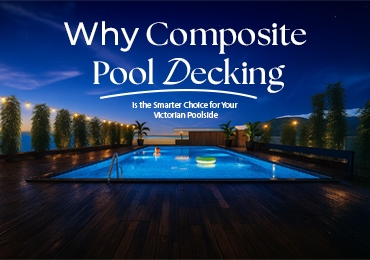
Victoria’s Trusted Garden Maintenance & Commercial Care Services
Maintaining a healthy, attractive garden requires more than just watering plants and mowing the lawn. Gardening services in Victoria are designed to keep both residential and commercial outdoor spaces thriving year-round through skilled maintenance and horticultural care. Whether you have a backyard garden or manage large public or commercial grounds, understanding the scope of gardening services and how they differ from landscaping is essential to making informed decisions. In this guide, we’ll explore what gardening services include, how they compare to landscaping, the typical costs involved, and the role of commercial and contract gardening in Australia—particularly in Victoria’s climate. What Are Gardening Services? Gardening services refer to the regular maintenance and upkeep of outdoor spaces, ensuring plant health, aesthetic appeal, and seasonal readiness. These services are tailored to support different types of gardens, from small residential lawns to more complex gardens with diverse plants and features. Common tasks covered under general gardening services include: Mowing and edging lawns Pruning trees and shrubs Weed control and mulching Fertilising soil and plants Pest and disease management Seasonal planting and garden clean-ups Irrigation system monitoring These services ensure that your garden remains vibrant and healthy, while also preventing issues like overgrowth, soil depletion, or plant diseases. Gardening Services vs. Landscaping Services Although closely related, gardening and landscaping are distinct services. Gardening is focused on the ongoing care and maintenance of existing plants, lawns, and garden features. Landscaping is more structural—it involves the design, planning, and installation of garden features, including retaining walls, turf laying, garden beds, water features, paths, and decks. Put simply: landscaping creates the garden’s foundation, while gardening keeps it alive and flourishing. How Much Do Garden Maintenance Services Cost in Australia? The cost of regular garden maintenance in Australia depends on several factors such as the size of the garden, the complexity of the work, the frequency of service, and location. Lawn size (m²) Complexity / level of work required Frequency of service and access Additional services (e.g., aeration, restoration, fertilisation) Typical rates include: Basic maintenance (mowing, weeding, pruning): $45 to $70 per hour Advanced or large-scale maintenance (hedging, restoration, tree pruning): $80 to $120 per hour For ongoing care, many property owners—especially commercial clients—opt for contract gardening agreements, which offer consistent service and often better value for long-term maintenance. What Services Are Included in Gardening? Lawn care: mowing, edging, fertilising, and seasonal treatments Tree and shrub pruning: to control growth, promote flowering, and prevent disease Weeding and mulching: to keep soil healthy and suppress weed growth Pest and disease control: early identification and treatment Seasonal planting: adding new plants and replacing dead ones Soil care: testing, fertilising, and composting as needed Clean-up services: removal of green waste, leaves, and storm debris For lawns specifically, certain conditions like thatch build-up—an excess layer of dead grass and roots—can hinder growth. In such cases, dethatching becomes an important part of garden restoration. It helps improve water and nutrient penetration, allowing your lawn to thrive. A well-executed dethatching treatment can significantly enhance lawn health and is often recommended during seasonal maintenance cycles. For more insight, explore this complete guide to lawn dethatching in Australia. What Is Commercial Gardening? Commercial gardening is the professional maintenance of outdoor areas in business, public, or institutional settings. Unlike residential gardening, commercial gardening is usually performed on a larger scale and may involve ongoing contracts to manage: Office complexes Apartment blocks Educational institutions Government and council lands Industrial and retail parks Resorts, hotels, and hospitality properties These services ensure that high-traffic areas remain clean, attractive, and compliant with local environmental and safety standards. Where Is Commercial Gardening Practiced? Public green zones: parks, recreational areas, median strips Corporate properties: business parks, commercial office campuses Hospitality venues: golf courses, resort landscapes, and event spaces Institutional grounds: schools, hospitals, universities Retail and shopping centres: including carparks and entryways The goal is to maintain functional, visually pleasing environments that serve both the business and the community. Is Commercial Gardening Intensive or Extensive? Intensive gardening: involves high input—labour, irrigation, fertilisers—for the maintenance or production of plants in concentrated areas. This is typical of flower farms, greenhouses, or specialty crops. Extensive gardening: lower input per square metre, spread over larger areas—such as grass mowing, tree trimming, or general site upkeep. Most commercial property maintenance falls under extensive gardening, with targeted intensive care in high-visibility zones. What Crops Are Grown in Commercial Gardening? Leafy greens: lettuce, spinach, kale Herbs: basil, mint, coriander Root vegetables: carrots, beets, radishes Flowers and ornamentals: both native and exotic species Potted plants and shrubs for retail and wholesale nurseries These crops are cultivated for both local consumption and commercial resale across Australia. What Climate Supports Commercial Gardening in Victoria? Warm summers that support rapid plant growth Mild winters with lower risk of frost Consistent rainfall, particularly in southern and coastal regions Defined seasons, allowing structured planting schedules These climatic conditions are ideal for both maintenance-focused services and crop production in commercial settings. Supporting Long-Term Garden Health Across Victoria From home gardens to public parks and corporate campuses, garden maintenance plays a crucial role in shaping beautiful, sustainable spaces. With the right care—tailored to seasonal needs, local climate, and property type—outdoor areas can stay green, healthy, and ready for every season. If you’re seeking dependable, experienced support for your garden—whether residential or commercial—Skynature offers thoughtful, long-term solutions across Victoria. Invest in the Health of Your Garden A healthy, vibrant outdoor space requires regular care and the right expertise. Whether you're managing a small backyard or a large commercial site, professional gardening services deliver the seasonal attention and horticultural know-how your landscape needs to flourish. At Sky Nature, we offer reliable, eco-conscious gardening and maintenance packages tailored to Victoria's climate and your property's needs. We love to hear from you Contact Us
- 09 August, 2025
- 7 min Read
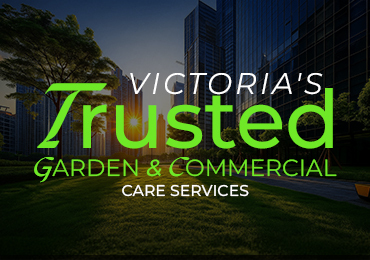
Choosing the Right Boundary Fencing in Victoria: What Every Property Owner Should Know
When it comes to fencing your property in Victoria, it’s not just about putting up a barrier—it’s about enhancing privacy, boosting security, and adding long-term value to your outdoor space. Whether you're a homeowner, landlord, or commercial property manager, choosing the right boundary fencing Service is a major decision. From aluminum fences and iron fencing to timber and chain link, the options are diverse. This guide will help you understand: The different types of fencing materials and styles What influences fencing costs (without giving fixed prices) Fencing regulations in Victoria A pre-installation fencing checklist Tips to maintain your fence How to pick the right fence for your specific needs Let’s dive in and help you make an informed choice backed by expert insight from Skynature—your trusted fence builder in Victoria, Australia. 1. Popular Types of Fencing Materials & Styles Each property has different fencing needs—some require privacy, others focus on durability or modern appeal. Here's a breakdown of the most common fencing styles in Victoria: Aluminum Fencing Sleek, low maintenance, and corrosion-resistant Ideal for pool enclosures and contemporary homes Lightweight yet durable, with modern visual appeal Iron Fencing (Wrought Iron) Decorative and long-lasting, perfect for heritage homes Requires periodic anti-rust treatment Great for high-end aesthetics and security Timber Fencing A traditional, eco-friendly choice Offers natural privacy and sound insulation Can be painted or stained to match the garden style Colorbond Steel Fencing Durable and weather-resistant Designed for maximum privacy and low maintenance Available in a variety of colours for aesthetic flexibility Chain Link Fence Cost-effective solution for larger spaces Common in commercial, sports, or industrial areas Can be paired with screens for added privacy Your ideal material will depend on your goals, budget, and property type—and our team at Skynature can help you match the right style to your space. 2. Cost Considerations: Tailored to Your Property’s Needs Fence installation isn’t a one-size-fits-all service—especially across diverse Victorian landscapes. At Skynature, we don’t believe in generic pricing. Instead, we base our estimates on the unique characteristics of your property. Key factors that affect fencing costs: Property Type: Residential fencing tends to differ in scale and design from commercial or rural fencing. Material Selection: Iron, aluminum, timber, or Colorbond all come with varying costs, durability, and aesthetic value. Design Complexity: Custom finishes, heights, or security features will affect pricing. Site Conditions: Sloping land, tight spaces, or difficult soil can add to installation requirements. Permit & Council Approvals: Some fencing types or locations may need compliance with Victoria's local regulations. Skynature offers free consultations where we evaluate your site and provide a tailored estimate with no hidden costs. We help you balance performance, design, and budget—without compromising on quality. 3. Fencing Regulations in Victoria, Australia Before installing any boundary fencing, it’s important to understand state and local regulations in Victoria. Non-compliance can lead to legal or financial complications. Key fencing regulations include: Height Restrictions: Fences over 2m generally require a building permit. Neighbouring Boundaries: If the fence is shared, both neighbours typically share the cost and must agree on the design (per Fences Act 1968). Corner Blocks & Traffic Visibility: Special visibility rules apply to fences near road intersections. Pool Fencing: Must comply with Australian Standard AS1926, ensuring child safety and spacing of verticals. At Skynature, we handle the approval process where necessary and ensure your new fence is compliant and stress-free from day one. 4. Pre-Installation Checklist: What to Know Before Building Installing a fence requires planning. Here’s a quick fencing checklist to help you prepare: Identify your property boundaries Choose the right fencing style and purpose Check for council regulations or overlays Discuss shared fencing with your neighbour Request a professional site inspection Remove any vegetation or old structures Review installation plan and timelines Book with a licensed fence builder in Victoria Skynature supports you through every step—from planning to clean-up—ensuring professional workmanship throughout. 5. Post-Installation: How to Maintain Your Fence A well-installed fence can last for decades with the right upkeep. Here’s how to keep it in great shape: Timber Fencing Repaint or re-stain every 2–3 years Watch for termites, rot, or splitting boards Keep soil and mulch clear of base posts Colorbond or Aluminum Fences Clean with water to remove dust and debris Avoid piling materials against the fence Touch up scratches to prevent corrosion Iron Fencing Check for rust and apply protective coatings Lubricate hinges and joints as needed Repaint when finish wears off Need help with post-installation fence care? Skynature offers ongoing support and repairs to keep your fencing strong and secure. 6. What Type of Fencing is Right for Your Needs? Choosing the ideal fencing style depends on your goal. Here’s a quick guide: Goal Recommended Fencing Privacy Timber, Colorbond Modern Aesthetic Aluminum, Colorbond Durability & Strength Iron, Aluminum Budget-Friendly Chain Link, Timber Pet or Child Safety Colorbond, Chain Link with mesh Low Maintenance Aluminum, Colorbond Commercial or Rural Use Chain Link, Iron Still not sure? Our team can help you select the most suitable fencing solution after a site evaluation—whether it’s for a small backyard or a large-scale commercial project. Final Thoughts: Trust Skynature for Quality Fence Installation in Victoria Fencing is more than a boundary—it’s protection, privacy, and presentation all in one. At Skynature, we combine craftsmanship, local knowledge, and premium materials to deliver fencing solutions built to last. Whether you need fencing services, fence repair, or complete fence installation in Victoria Australia, we’re here to help. Our experienced team works with residential and commercial clients across the region to deliver affordable, customised fencing options—from aluminum fences to iron and chain link fencing. Ready to upgrade your boundary fencing? Contact Skynature today for a no-obligation quote and let’s bring your fencing vision to life with quality, reliability, and style. We love to hear from you Contact Us
- 01 August, 2025
- 8 min Read
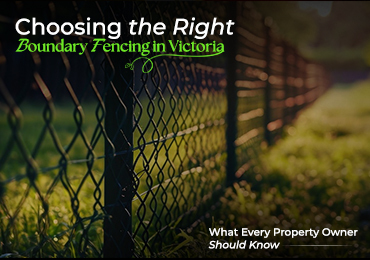
The Complete Guide to Hedge Trimming & Pruning in Victoria
Maintaining a well-groomed garden is essential for both aesthetic appeal and plant health. In Victoria, hedge trimming and garden pruning are two of the most effective yard maintenance practices that homeowners and property managers rely on. Though often used interchangeably, trimming and pruning serve different purposes and are performed with different techniques. This guide will help you understand the differences between hedge trimming and pruning, when and how to carry them out, what tools are required, and why they’re crucial for residential lawn care and property maintenance in Victoria. What Is Hedge Trimming & Pruning? Hedge trimming refers to the process of cutting back the outermost growth of hedges, shrubs, or bushes to shape them, maintain uniformity, and keep them from growing out of control. It’s mainly aesthetic but also encourages denser foliage. Pruning, on the other hand, involves the selective removal of dead, damaged, or diseased branches to improve a plant’s structure, promote healthier growth, and reduce the risk of pests or disease. It's more technical and health-focused. Both are essential parts of a proper lawn mowing service and yard maintenance routine in Victoria. What Is Hedge Trimming & Pruning? Feature Hedge Trimming Garden Pruning Purpose Shape & tidy Health & growth Tools Hedge trimmers Secateurs, saws Frequency Regular Seasonal Plant Focus Hedges, shrubs Trees, bushes, perennials Result Clean appearance Stronger structure While hedge trimming is part of general residential lawn care, pruning is more horticulturally focused and requires knowledge of plant biology. When Should You Trim or Prune? When to Trim Hedges In Victoria, the best time for hedge trimming is late winter to early spring before new growth begins, and then again in early summer for a clean-up. Evergreen hedges benefit from two trims a year, while deciduous hedges may need only one. When to Prune Pruning is best done in late winter or early spring, depending on the species. For flowering shrubs, prune immediately after blooming to avoid cutting off flower buds. Purpose, Process, Frequency & Tools of Hedge Trimming Purpose Maintain tidy appearance Encourage denser growth Control hedge height and width Improve curb appeal Tools Required Electric or petrol hedge trimmer Manual shears Ladder for tall hedges Safety gloves and goggles Frequency 1–3 times per year, depending on growth rate and plant species. Process 1. Inspect hedge shape and overgrowth 2. Start trimming from bottom to top 3. Keep the top narrower than the base 4. Step back regularly to check symmetry Trimming also supports other property maintenance activities like lawn mowing, leaf clearing, and seasonal cleanup. Purpose, Process, Frequency & Tools of Pruning Purpose Remove dead/diseased wood Shape plant naturally Encourage flowering or fruiting Reduce risk of pests or storm damage Tools Required Bypass pruners (for small branches) Loppers (for medium branches) Pruning saws (for thick limbs) Disinfectant (to prevent disease spread) Frequency Once or twice annually, or as needed for corrective pruning. Process 1. Identify dead, diseased, or crossing branches 2. Make clean cuts just above a bud or branch collar 3. Disinfect tools between cuts to prevent spread 4. Avoid excessive cuts to reduce stress on plant 3 Common Types of Pruning There are three common methods: Thinning – Removing entire branches to allow more light and air through. Heading – Cutting back growth to stimulate dense branching. Cleaning – Removing only dead or diseased parts for safety and plant health. These methods form the core of professional garden pruning services in Victoria. Benefits of Pruning The cost of lawn dethatching depends on: Promotes healthy growth and flowering Prevents the spread of disease Improves plant structure and stability Reduces hazards from falling branches Increases sunlight and airflow Pruning also helps rejuvenate old or overgrown plants and ensures long-term garden health. Benefits of Hedge Trimming Enhances property appearance instantly Keeps hedges compact and manageable Prevents obstruction of walkways and windows Deters pests by removing hiding spots Encourages thicker, fuller foliage Proper hedge trimming is especially valuable in yard maintenance routines across Victoria’s residential suburbs. Why Winter Is Better Than Spring for Trimming & Pruning in Victoria While spring is often associated with new growth, winter is actually the ideal time for most hedge trimming and pruning activities in Victoria. Here's why: 1. Plants Are Dormant During winter, many trees, shrubs, and hedges enter a dormant phase, meaning their growth slows down significantly. This makes it easier to prune without stimulating excessive new growth, which could be damaged by late frosts or unpredictable weather. 2. Easier to See Plant Structure With less foliage, it's easier to see the framework of branches. This allows for more precise cuts, especially in pruning, where removing dead or diseased wood requires careful judgment. 3. Prepares Plants for Healthy Spring Growth Pruning and trimming in winter gives plants time to heal before the growing season. When spring arrives, the plant can direct its energy toward fresh, strong growth, resulting in healthier blooms, fuller hedges, and better structure. 4. Reduces Risk of Pests & Diseases Cold weather limits the activity of insects, fungi, and bacteria. Trimming and pruning during this time minimises the chance of infection or pest attacks, which are more common in warmer seasons. 5. Better Timing for Flowering Shrubs Pruning flowering shrubs in winter ensures you don’t accidentally cut off buds that would bloom in spring. This is especially important for plants that flower on new growth. How to Trim an Overgrown Hedge Without Killing It Overgrown hedges can be tricky to manage. To trim them safely: Start gradually—avoid removing more than one-third of the hedge at once Use sharp tools to make clean cuts Trim in stages across seasons for recovery Focus on the sides first, then reduce the top slowly Avoid trimming in extreme heat or frost This careful approach helps restore the hedge without shocking or killing the plant. Tips for Hedge Trimming & Pruning Overgrown hedges can be tricky to manage. To trim them safely: Always use clean, sharp tools Trim or prune on dry, mild days Disinfect blades between plants to avoid cross-contamination Learn the specific needs of each plant species Observe regrowth and adjust frequency accordingly Hire property maintenance experts for complex or high-reach jobs Both pruning and hedge trimming are essential services within a complete lawn mowing and garden care plan. Why Hedge Trimming & Pruning Matter in Victoria Victoria’s varied climate—ranging from cool coastal winds to hot inland summers—means plants grow at different rates throughout the year. Regular hedge trimming and pruning help your garden withstand seasonal changes, prevent storm damage, and look well-maintained year-round. Professional care also ensures your yard aligns with local council regulations and improves overall property value. Local Experts in Hedge Trimming & Pruning – Skynature At Skynature, we specialise in professional hedge trimming and pruning services across Victoria, Australia. Our experienced team understands local plant types, seasonal needs, and the right techniques to keep your garden thriving—without overcutting or damaging your hedges. Whether you need routine shaping or corrective pruning, we offer tailored, reliable solutions for residential lawn care, yard maintenance, and property upkeep. We love to hear from you Contact Us
- 25 July, 2025
- 9 min Read
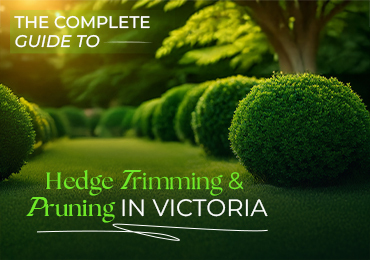
Complete Guide to Lawn Dethatching in Australia: What It Is, Why It Matters & When to Do It
A lush, green lawn is every homeowner's dream — but sometimes, no amount of mowing, watering, or fertilising seems to bring it back to life. If your lawn feels spongy, looks patchy, or struggles to grow, the real issue may lie below the surface. Lawn dethatching is a professional solution that can rejuvenate your grass and restore its health. In this blog, we’ll cover everything you need to know about dethatching in Australia, from what it is to when to do it and how much it costs. What is Lawn Dethatching? Lawn dethatching is the process of removing the layer of organic debris — called thatch — that forms between your soil and the grass blades. This layer is made up of dead roots, leaves, and grass clippings that don’t decompose quickly. A little thatch (under 1.5cm) is beneficial — it insulates the soil and retains moisture. But excessive thatch blocks: Water Oxygen Nutrients This starves your lawn, making it thin, brown, and disease-prone. That’s why investing in a lawn dethatching service in Australia is one of the smartest ways to protect and revitalise your turf. Why Is Dethatching Important for Australian Lawns? Australia's varied climates — from hot summers to cool winters — can stress grass and accelerate thatch build-up, especially in warm-season grasses like Kikuyu, Couch, and Buffalo. Regular dethatching: Stimulates new grass growth Improves soil-to-root contact Enhances water absorption and fertiliser effectiveness Prevents lawn diseases caused by trapped moisture It’s an essential part of seasonal lawn care, especially if you live in Victoria or other southern regions with fluctuating temperatures. When Should You Dethatch Your Lawn? The best time to dethatch is during your lawn’s growing season: Early spring for warm-season grasses (e.g., Couch, Kikuyu) Late spring or early autumn for cool-season grasses Avoid dethatching during winter dormancy or peak summer heat, as this can shock your grass. If you're unsure, a local lawn dethatching service near you assess your turf and advise the right time for treatment. How Is Lawn Dethatching Done? There are three common methods: Manual Raking Using a dethatching rake. Best for small lawns with light thatch. Power Raking Uses a machine with vertical blades to cut through thatch. Ideal for moderate buildup. Verti-Cutting / Scarifying A heavy-duty method using professional equipment for severe thatch layers. Most homeowners opt for a professional lawn dethatching service in Australia, especially for large or heavily compacted lawns. What Does a Lawn Dethatching Service Cost in Australia? The cost of lawn dethatching depends on: Lawn size (m²) Level of thatch buildup Location and access Additional services (e.g., aeration or fertilisation) On average, expect to pay $100–$300 for residential dethatching services. If you’re searching for an affordable lawn dethatching service near me, Sky Nature offers budget-friendly packages tailored to your lawn’s condition. DIY vs. Professional Lawn Dethatching: What’s Better? You can rent dethatching equipment or buy a rake, but DIY dethatching is time-consuming, physically demanding, and risky if done incorrectly. Many lawns get damaged by improper technique or over-dethatching. Hiring a lawn dethatching service in Australia gives you: Trained professionals High-grade equipment Faster results Healthier turf with minimal stress Why Choose Sky Nature for Lawn Dethatching in Victoria? At Sky Nature, we specialise in restoring tired, unhealthy lawns using expert dethatching and eco-conscious lawn care practices. We serve homes across Victoria with fast, reliable, and affordable services that get real results. Whether you're battling thick thatch or prepping for the growing season, we’re here to help your lawn thrive. Local Expertise Eco-Friendly Solutions Competitive Lawn Dethatching Service Cost Free Lawn Inspection & Quote FAQs & Common Concerns About Lawn Dethatching How do I know if my lawn needs dethatching? If your lawn feels spongy, struggles to absorb water, or has yellow/brown patches despite care, it's likely suffering from excess thatch. Insert a screwdriver — if it’s difficult to penetrate more than 2–3cm, dethatching may be needed. Can dethatching damage my lawn? Yes — if done at the wrong time or too aggressively. That’s why it’s best left to professionals who understand the right techniques and timing based on grass type and climate. How often should dethatching be done? Most lawns need dethatching every 1–3 years. Overdoing it can harm the grass, while neglecting it encourages turf disease. Is lawn aeration the same as dethatching? Dethatching removes the surface layer of debris, while aeration loosens compacted soil by punching holes into the ground. However, they work well together for lawn restoration. Should I dethatch before or after fertilising? Always dethatch before fertilising — it clears the path for nutrients to reach the soil effectively. Can I rent a machine and do it myself? Yes, but DIY dethatching comes with a learning curve. Rental machines can be heavy, and incorrect usage may cause lawn damage. If you're searching for lawn dethatching machine rental near me, weigh the effort vs. hiring a professional team. Invest in the Health of Your Lawn with Dethatching A healthy, vibrant lawn starts from the ground up — and that means keeping thatch under control. Lawn dethatching is not just a maintenance task; it’s a crucial investment in the long-term health, appearance, and resilience of your turf. Whether you're dealing with spongy patches, water runoff, or struggling grass, dethatching clears the way for better growth and stronger roots. While it’s possible to do it yourself, a professional lawn dethatching service in Australia ensures safe, effective, and lasting results without damaging your lawn. At Sky Nature, we help homeowners across Victoria bring their lawns back to life with trusted, eco-friendly dethatching services. We love to hear from you Contact Us
- 12 July, 2025
- 7 min Read

Rubbish Removal Victoria Australia – Clean Homes Start with Clean Surroundings
We all want a clean, clutter-free home. But let’s be honest — life gets busy, junk piles up, and before you know it, the backyard’s filled with broken chairs, garden waste, or those boxes you meant to sort out “someday.” That’s where professional rubbish removal services come in — and if you’re in Victoria, Australia, there’s no better time to clear the clutter than now. Whether it’s a spring clean, post-renovation mess, or just weekly household junk, proper rubbish removal isn’t just about tossing things out — it’s about reclaiming your space and peace of mind. And with Skynature, one of the most trusted rubbish removal service companies in Victoria, cleaning up has never been easier. Why Rubbish Removal Shouldn’t Be an Afterthought Rubbish doesn’t just ruin the view — it can become a real problem: It attracts pests and insects. It’s a fire and safety hazard. It clogs up valuable storage space. It can even lower the value of your property. By booking a trusted home cleaning service in Victoria that includes professional rubbish removal, you’re not just improving how your space looks — you’re protecting your health, your home, and even your neighbourhood. What Counts as “Rubbish” Anyway? You’d be surprised at what ends up sitting in yards, garages, and driveways. Here’s a quick list of common types of rubbish we help Victoria homeowners get rid of: Household waste – Broken furniture, old electronics, kitchen scraps, worn-out mattresses Green waste – Lawn clippings, tree branches, garden trimmings Renovation debris – Plasterboard, timber, bricks, roofing tiles Garage junk – Old tools, unused paint tins, rusted bikes Bulk or hard waste – White goods, washing machines, fridges, old couches If it’s non-toxic, non-hazardous, and taking up space? Chances are, we can take it. rubbish removal service company Same-Day or Scheduled Pickups Need junk gone fast? We offer flexible booking options, including emergency clean-outs and scheduled pickups to suit your timing. Eco-Conscious Disposal We don’t just dump everything in landfills. We sort, recycle, and dispose of rubbish responsibly — because clean homes should never mean a dirty planet. Professional, Friendly Team Our crew is trained, insured, and punctual. No gruff tradies — just respectful, hardworking professionals who treat your space like it’s their own. Transparent Pricing No hidden fees, no nasty surprises. We quote upfront based on volume and type of waste — simple as that. When Should You Book a Rubbish Removal Service? If you’re unsure when to bring in the pros, here are some common use cases where rubbish removal makes life easier: Moving House Don’t haul old furniture or broken appliances to your new place. Clear it out before the move and start fresh. Spring Cleaning Once a year (or more), give your home a full refresh — including the yard and garage. Renovation or Construction DIY jobs leave a surprising mess. Save your back and skip the tip runs. Garden Overhauls Pruning trees or landscaping? Let us handle the green waste while you enjoy the new view. Deceased Estate Cleanouts A sensitive task. We handle it with the care and discretion it deserves. What to Expect During a Rubbish Pickup with Skynature Booking with us is easy, and the process is straightforward: Contact & Quote Call or book online with a few photos or a quick description of the waste. Confirm Schedule Choose a time that works for you — even same-day service if available. We Arrive On-Time Our team turns up with the right equipment, vehicles, and attitude. We Load It All You don’t lift a finger. We do all the heavy lifting and cleanup. Responsible Disposal We recycle where possible and dispose of the rest according to Victorian regulations. Rubbish Removal Isn’t Just a Chore – It’s a Reset There’s something powerful about walking into a room or backyard that’s finally cleared. It feels like a fresh start — mentally and physically. When you free your home of junk, you make space for: Better storage Safer movement (no tripping hazards!) Cleaner air More peace of mind And let’s not forget — it just feels good. Key Takeaways Rubbish removal helps you reclaim space and reduce health hazards. Skynature provides fast, friendly, and eco-conscious removal services in Victoria. Services include household, garden, construction, and hard waste. Ideal for spring cleaning, renovations, estate clearances, and more. Booking is easy, pricing is transparent, and results are immediate. FAQ – Quick Answers for Curious Cleaners How much does rubbish removal cost in Victoria? Costs vary based on the type and volume of waste. At Skynature, we offer clear upfront pricing — no surprises. You can get a free quote online or via call. Do I need to sort the waste myself before pickup? Nope! Our team does the sorting for you. Just let us know what needs to go, and we’ll handle the rest. What happens to the rubbish after it’s collected? We follow sustainable practices, sorting for recycling and safely disposing of the rest according to environmental standards. Ready to Reclaim Your Space? Whether you’re tackling a big cleanup or just tired of tripping over clutter, Skynature is here to help. We’re proud to serve homes across Victoria with rubbish removal that’s fast, respectful, and eco-smart. Give us a call or book online now — let’s clean up together. We love to hear from you Contact Us
- 02 July, 2025
- 7 min Read

How to Choose the Best Wood Fence for Your Victorian Home
If you're living in Victoria and thinking about adding or replacing a fence, wood is a timeless choice that balances aesthetics, functionality, and affordability. But choosing the best wood fence for your Victorian home isn't just about picking a style and calling a contractor. It's about finding a balance between your property's needs, local weather conditions, and the overall look you want to achieve. In this guide, we'll walk you through how to choose the right wood fencing in Victoria without the overwhelm. Why Wood Fencing Works So Well in Victoria Wood fences remain a popular choice for homeowners in Victoria for several good reasons: Natural Look: Wood blends beautifully with the green landscapes and period architecture common in Victorian suburbs. Privacy and Security: Timber fencing offers a solid barrier against noise and nosy neighbours. Versatility: From classic pickets to tall privacy panels, wood offers plenty of design flexibility. Repairable: Damaged panels or posts can usually be fixed or replaced without redoing the whole fence. Whether you're building a decorative garden fence or a privacy wall, timber fencing in Victoria offers long-term value with the right care. Key Factors to Consider When Choosing Wood Fencing in Victoria 1. Purpose of the Fence Ask yourself: Why do I need a fence? Is it for privacy, security, pet containment, aesthetic appeal, or all of the above? Privacy: Go for tall panels or vertical slat designs. Security: Consider sturdier hardwoods and solid construction. Decoration: Look at lattice or picket styles with decorative tops. 2. Type of Timber The kind of wood you use impacts durability, look, and maintenance: Treated Pine: Cost-effective and widely used, but may not last as long as hardwoods. Hardwoods (like Merbau or Ironbark): More durable and weather-resistant, ideal for long-term performance. Cypress Pine: Naturally termite-resistant and great for structural posts. When choosing timber fencing for privacy in Victoria, always ask your contractor if the timber is sustainably sourced and suitable for local conditions. 3. Design and Style Your home's architectural style matters. Victorian-era homes often pair beautifully with: Picket Fencing: Classic charm and street appeal. Vertical Slats: Clean lines for a more modern take. Lattice Tops or Decorative Posts: Add visual interest while maintaining privacy. 4. Maintenance Requirements Wood fencing needs some care to stay in good condition: Staining or Sealing: Reapply every 1-2 years to prevent rot and sun damage. Inspections: Check for loose boards, nails, and signs of termites. Repairs: Know when a quick wood fence repair in Victoria is enough, and when it's time for a full wood fence replacement. 5. Budget and Cost The cost of wood fencing in Victoria varies based on timber type, fence length, height, and style. Generally: Treated pine is cheaper but may require more maintenance. Hardwood and custom designs come at a premium but last longer. Get multiple quotes from local wood fence contractors in Victoria and ensure the scope of work includes installation, finishing, and cleanup. Key Takeaways Choose your fence style based on purpose: privacy, decoration, or security. Match timber type to your budget and environment. Don’t overlook maintenance – plan for periodic sealing or painting. Work with experienced wood fence contractors in Victoria for best results. Common Use Cases for Wood Fencing Front Yard Boundaries: Picket fences with a heritage touch. Backyard Privacy Walls: Tall timber panels for peace and quiet. Garden Enclosures: Decorative wood garden fencing in Victoria homes. Pool Safety Barriers: With treated wood that complies with local safety regulations. Frequently Asked Questions Q1: How long does a timber fence last in Victoria? With proper maintenance, a timber fence can last 10–20 years or more, depending on the wood type and exposure to weather. Q2: Can I DIY a wooden fence installation in Victoria? Yes, but it’s best left to professionals for durability and compliance with council regulations. Q3: What is the average cost of wood fencing in Victoria? On average, it ranges from $75 to $120 per metre, depending on timber type and design. Final Thoughts Choosing the best wood fence for your Victorian home is about more than good looks. It’s about creating a secure, private, and welcoming space that enhances your lifestyle and adds value to your property. At Sky Nature, we help you make informed choices with top-quality timber, expert craftsmanship, and personalised service. Ready to transform your outdoor space? Contact us for a free quote today! We love to hear from you Contact Us
- 26 June, 2025
- 6 min Read

Top 7 Benefits of Professional Gate Installations in Victoria, Australia
When it comes to securing and enhancing the value of your property in Victoria, few upgrades are as effective and long-lasting as a professionally installed gate. Whether you're a homeowner, a business owner, or managing a commercial facility, investing in expert gate installation in Victoria brings multiple benefits that go far beyond aesthetics. Here are the top 7 reasons why professional fencing gate installations in Victoria are worth every dollar. 1. Enhanced Security and Peace of Mind One of the most obvious benefits of installing a gate is the added layer of security it provides. Professionally installed gates act as both a physical and visual deterrent to intruders. Whether you're considering residential gate installation in Victoria or managing a warehouse that needs secure access, having the right gate can make a big difference. Key Takeaway: Properly installed gates reduce unauthorized access and provide greater control over who enters your premises. 2. Increased Property Value and Curb Appeal First impressions count. A well-crafted gate instantly improves the aesthetic appeal of your home or business. For real estate investors or homeowners looking to sell, an attractive gate can be a deciding factor for buyers. Use Case: Timber gate installations in Victoria are especially popular in residential settings for their natural look and durability. 3. Customisation to Suit Every Need Unlike DIY options, professional gate installers in Victoria, Australia offer a wide range of custom solutions tailored to your exact requirements. From automatic gate installation in Victoria to custom gate installers in VIC who design gates for unique landscapes, customisation means no compromises on style, function, or material. Popular Options Include: Sliding and swinging gates Timber, steel, or aluminium designs Manual or automated systems 4. Regulatory Compliance and Safety Especially in industrial gate services in Victoria and commercial setups, there are strict safety and compliance requirements. Professional installers ensure that the gate system adheres to all relevant Australian standards, including workplace safety codes. Expert Tip: Skynature’s team is well-versed in local council regulations and can help navigate approval processes smoothly. 5. Durability and Long-Term Performance When you hire experts for gate installation, you're not just paying for the structure—you're investing in materials that are tested for Victoria’s climate. Whether it's harsh sun, salt air near the coast, or heavy rainfall, professional-grade gates are designed to last. Bonus: Professionals use corrosion-resistant hardware and proper mounting techniques to ensure longevity. 6. Smart Technology Integration Modern gate installers in Victoria offer tech-savvy solutions. Automatic and remote-controlled gates enhance convenience while maintaining high-security standards. Integration with smartphone apps, intercoms, and camera systems is no longer just for high-end properties. Use Case: Residential properties in urban Victoria often opt for keyless entry or app-based controls for secure deliveries and family access. 7. Professional Installation Saves Time and Headaches Let’s be honest—DIY gate installations rarely go as planned. From improper alignment to unreliable automation setups, cutting corners can lead to costly repairs. With a trusted provider like Skynature, the job is done right the first time. Peace of Mind: You get expert measurements, proper anchoring, and reliable post-installation support. Quick Benefits Recap Boosts property security Adds visual appeal and value Allows for custom designs and automation Meets all legal and safety standards Handles Victoria's tough climate conditions Offers smart tech integration Ensures quality workmanship and support Frequently Asked Questions What is the best type of gate for homes in Victoria? Timber and automatic gates are both popular for residential gate installation in Victoria due to their durability and aesthetic value. Do I need council approval for a new gate in Victoria? Depending on the height and location, some gate installations may require local council approval. Skynature can assist with all compliance matters. How long does a professional gate installation take? Most standard installations are completed within 1-3 days. Custom or commercial gate installation in Victoria may take longer depending on the scope. Ready to Upgrade Your Entrance? If you’re planning a secure, stylish, and durable fencing gate installation in Victoria, Skynature is here to help. With years of experience and a reputation for quality, our team makes sure your property gets the protection and polish it deserves. When you’re ready to upgrade your outdoor living space, don’t just build a deck—build it right. We love to hear from you Contact Us
- 19 June, 2025
- 5 min Read
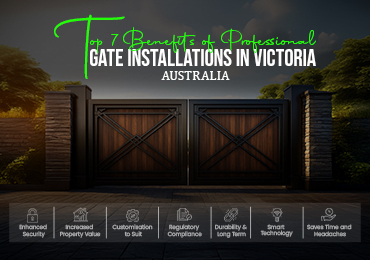
Top Dressing Lawn – A Step-by-Step Guide for Lush, Healthy Grass
Top dressing your lawn is one of the best ways to transform patchy turf into a thriving, vibrant green expanse. But to get that dream lawn, it's not just about top dressing—you'll want to tackle thatch buildup, ensure proper aeration, and maintain consistent care. This guide walks you through dethatching your lawn, choosing lawn dethatching services (if needed), preparing your soil, aerating your lawn, and applying top dressing for professional-grade results. Why Top Dressing Lawn Matters Top dressing involves spreading a thin mix of compost, sand, and soil over your turf. It: Improves soil structure and drainage Encourages healthy root growth Smooths out unevenness and repairs bare patches Works best after dethatching and aerating But if your lawn is caked with old grass debris, it will block air, water, and nutrients. That’s where dethatching your lawn and aerating your lawn come in. Step 1 – Dethatching Your Lawn for Better Penetration Dethatching removes the buildup of dead grass and organic material at the soil surface (the “thatch layer”). If left unchecked, thatch: Prevents water and nutrients from reaching roots Encourages pests and disease Makes top dressing ineffective How to dethatch your lawn: Check thatch depth—anything over ½ inch is problematic. For small areas, use a handheld dethatching rake; for large lawns, rent or hire a power dethatcher. Go over the lawn once lengthwise, then sideways. Remove debris and dispose of it—or compost it if clean. If this sounds tricky, consider lawn dethatching services—many local providers can do a neat, efficient job. Pairing a service with your top dressing process saves time and guarantees effectiveness. Step 2 – Aerating Your Lawn Before Top Dressing After dethatching, aerating your lawn is key to ensuring the amendments reach the root zone. Core aeration relieves compaction and fosters root development through better water absorption. DIY aeration steps: Ensure soil is moderately moist (water first if dry). Use a core aerator (plug-style) over the lawn once or twice, spacing passes evenly. Leave soil plugs on the surface—they break down, enriching your lawn. Combining dethatching and aeration creates healthy entry points for top dressing to work wonders. Step 3 – Choose the Best Top Dressing Mix A high-quality top dressing mix typically includes: 40–60% coarse sand (improves drainage) 30–40% quality compost (adds nutrients) 10–20% topsoil (for texture consistency) Local suppliers or turf professionals can blend premixed solutions. Use a shovel or wheelbarrow to haul the mix to your lawn area. Step 4 – Applying Top Dressing to Your Lawn How to top dressing lawn properly: Use a shovel or drop spreader to distribute ⅛ to ¼ inch of mix evenly. Lightly rake to incorporate into grass without smothering it. Water thoroughly to help the mix settle. Don’t mow for a few days, or set mower high and catch clippings. This seals the amendments into working with your existing soil and plants. Step 5 – Follow-up Care & Maintenance Continue watering lightly and regularly for 1–2 weeks. Fertilize with a balanced lawn feed a month later. Resume mowing at the proper height (usually 2½–3 inches). Consider spot-treating with compost in bare or low areas. Combine seasonal dethatching, aerating, and top dressing annually or bi-annually for optimal lawn health. Spread the Load: Hire Professional Lawn Dethatching & Aerating Services If the idea of rental gear or repetitive work isn’t for you, a pro service can help: Lawn dethatching services—cut thatch back fast; leaves minimal mess. Aerating your lawn services—offers plug aeration for compaction relief. Combined with top dressing lawn services, you can skip the hassles and get expert results. FAQ – Common Questions About Top Dressing Lawn Q1: Can I top dress without dethatching? You can—but you’ll see poor soil contact and little benefit unless thatch is removed first. Q2: When is the best time to aerate and top dress? Early spring or early autumn—when grass is actively growing—for best recovery. Q3: How much top dressing should I apply? A thin layer of about ⅛ to ¼ inch per application; don’t smother the grass. Final Thoughts: A Beautiful Lawn Starts with the Basics Proper dethatching your lawn, aerating your lawn, and carefully layering top dressing lawn mix sets the foundation for a thick, green lawn that resists weeds, drought, and disease. Whether you tackle it yourself or hire lawn dethatching services, this seasonal care will pay dividends in long-term turf health—and will make your garden a standout in the neighborhood. When you're ready for expert help or just need the right products, visit Sky Nature to explore soil mixes, top dressing blends, and professional lawn care services. We love to hear from you Contact Us
- 14 June, 2025
- 6 min Read
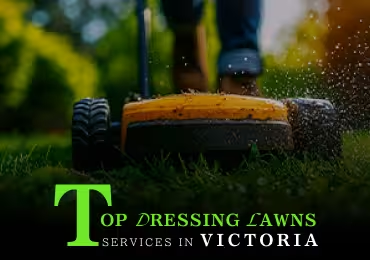
Hedge Trimming and Pruning: Elevate Your Garden with Professional Care
Achieving a lush, well-shaped hedge is more than just cutting back greenery—it’s about promoting healthier growth, enhancing curb appeal, and maintaining a tidy garden. At SkyNature, our Hedge Trimming and Pruning experts deliver outstanding garden care services that not only beautify your outdoor space but also improve plant health and longevity What Is Hedge Trimming and Pruning? Hedge trimming involves shaping and maintaining hedges, shrubs, and topiary into neat forms. Pruning goes deeper—cutting away dead or overgrown branches to encourage new growth and overall plant health. Both are essential components of gardening and mowing service routines, ensuring your greenery stays healthy and stunning. Why Your Garden Needs Professional Hedge Trimming and Pruning? 1. Promotes Healthier Growth Removing diseased or dying branches helps plants heal, redirect energy towards new shoots, and resist pests and disease outbreaks. 2. Boosts Aesthetic Appeal Regular trim keeps hedges looking bold and structured—ideal for both residential and commercial lawn & garden services. 3. Improves Safety & Light Overgrown branches can block walkways or touch homes. Proper pruning improves visibility, ventilation, and natural sunlight throughout your garden. 4. Maintains Hedge Shape Different plants require specific trim styles. Professionals know when to prune for that classic box look or a more relaxed, natural finish. Our Process for Hedge Trimming and Pruning Initial Garden Assessment We start with a walkthrough to identify: 1. Hedge health and structure 2. Types of plants (native, hedging, ornamental) 3. Overgrowth, disease, and pest signs Tailored Hedge Pruning Plan We customize care plans depending on plant species and your goals—whether it’s a sharp edge along a driveway or sculpted hedging screen. Precision Pruning & Shaping Using clean, well-maintained tools (hedge shears, bypass pruners, loppers), we: 1. Remove deadwood 2. Thin dense areas for airflow 3. Trim to tidy shapes and defined lines Final Review & Cleanup After trimming, we clear all debris, tidy up branches, and give your garden a polished finish. Benefits of Choosing SkyNature’s Garden Care Services Expert Knowledge Our horticulturists understand Australian hedging species and pruning techniques. Comprehensive Lawn Care We combine hedge trimming and pruning with mowing, fertilizing, mulching, and pest control for full-service garden care. Commercial-Grade Equipment Ideal for both small yards and large commercial landscapes. Eco-Friendly Practices We compost green waste, avoid harsh chemicals, and prefer organic care whenever suitable. Flexible Scheduling Monthly, quarterly, or seasonal visits—tailored to your garden’s unique needs. When You Need Hedge Trimming and Pruning Neighbour Complaints – Overgrown hedges may block views, footpaths, or cause disputes. Selling Your Home – Well-shaped hedges boost curb appeal and make a great first impression. New Growth Seasons – Hedges grow quickly in spring and autumn, needing regular maintenance. FAQs (Snippet-Friendly) Q1: How often should I schedule hedge trimming? Most hedges need trimming 2–4 times a year, depending on species and growth rate. Evergreen hedges benefit from consistent upkeep. Q2: Will cutting too much damage my hedge? Professional pruning targets no more than one-third of green growth at a time, preserving health and structure. Q3: Can you service large commercial landscapes? Absolutely! We offer full commercial lawn & garden services, including hedges, trees, flower beds, and turf care. SkyNature: Victoria’s Quality Gardening and Mowing Service With years of experience and a trusted team of green-fingers, SkyNature stands out in garden careservices, offering both residential charm and professional commercial results. We combine meticulous hedge trimming and pruning with mowing,weeding, and more to create outdoor spaces that thrive. Ready to Refine Your Garden? Contact us today for a FREE quote on hedge trimming and pruning or our full suite of gardening and mowing service options. Let SkyNature craft a healthier, more beautiful landscape—tailored just for you. Call us at 61 416959758 or visit skynature.com.au/contact Transform your garden with expert care today! We love to hear from you Contact Us
- 11 June, 2025
- 5 min Read
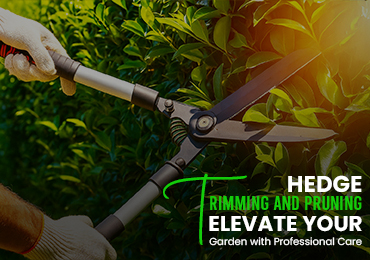
5 Reasons Why You Should Hire a Contractor to Build Your Deck
A deck is more than just a place to lounge or entertain—it’s an extension of your living space and an investment in your home. While it may be tempting to tackle the project yourself to save on labor costs, hiring a professional deck contractor often results in better quality, fewer headaches, and even cost savings in the long run. Here are five compelling reasons why hiring a contractor to build your deck is the smartest decision you can make. 1. Expertise and Experience Professional deck builders bring years of experience and technical knowledge to the table. They understand: Structural engineering principles Local council regulations and permits Material performance based on local weather (especially important in places like Melbourne with variable climates) Building codes for safety and compliance Without this expertise, a DIY deck might suffer from poor foundation, unlevel surfaces, or even structural failure. A contractor ensures that your deck is built to last, both aesthetically and functionally. 2. Access to High-Quality Materials Most contractors have partnerships with trusted suppliers, allowing them access to: Premium materials at wholesale or discounted prices Newer, high-performance products not available in big-box stores A better understanding of which materials work best in your environment They also know how to handle these materials correctly—cutting, sealing, and installing them to maximize their lifespan and performance. 3. Time and Cost Efficiency While DIY projects can be rewarding, they’re often more time-consuming and expensive than anticipated. Miscalculations, rework, tool rentals, and wasted materials can quickly add up. Hiring a contractor offers: Faster completion with fewer delays Accurate cost estimates and timelines Fewer surprises, because the contractor plans for contingencies You save valuable time and avoid the stress of coordinating labor, deliveries, and inspections. 4. Compliance and Warranty Protection Deck construction is subject to local building codes and safety standards. A licensed contractor: Understands zoning laws and permitting requirements Handles paperwork and inspections for you Ensures your deck complies with legal and structural safety standards Additionally, many contractors offer workmanship warranties, giving you peace of mind. If something goes wrong, you’re covered—unlike a DIY job, where you’re on your own. 5. Better Design and Customization Options Deck contractors don’t just build—they also design. Whether you want: A multi-level deck Integrated lighting Custom railings or seating Compatibility with landscaping or pools A skilled contractor can help bring your vision to life with professional-grade results. They also offer practical suggestions based on your home layout, sun exposure, and lifestyle needs. Bonus: Safety First Safety is often overlooked in DIY projects. Contractors use the right tools, safety gear, and construction techniques. This not only protects them during the build—but ensures your deck is safe for long-term use. FAQs About Hiring a Deck Contractor Q1: Should I still get involved in the design process? Absolutely! A good contractor collaborates with you to ensure the deck fits your vision, lifestyle, and budget. Q2: How long will the project take? Simple decks can take a few days, while more complex builds may span 1–3 weeks depending on weather and scope. Q3: What should I look for when hiring a deck contractor? Check for: Licenses and insurance Client references or reviews Portfolio of past work Written contracts and warranties Conclusion While DIY deck building might look like a fun weekend project, the advantages of hiring a professional contractor far outweigh the risks and costs of doing it yourself. From ensuring structural safety to delivering a beautiful, customized design, a skilled contractor can transform your vision into a long-lasting reality—efficiently and stress-free. When you’re ready to upgrade your outdoor living space, don’t just build a deck—build it right. We love to hear from you Contact Us
- 04 June, 2025
- 5 min Read
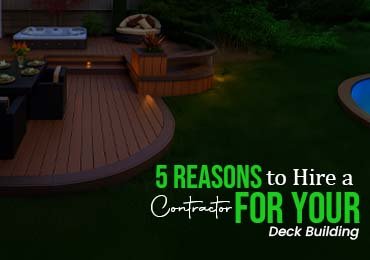
Choosing the Right Fence for Your Melbourne Property: A Comprehensive Guide
Whether you’re living in a quiet suburban street or an urban Melbourne neighbourhood, a fence isn’t just a boundary—it’s a statement. It defines your space, enhances your property’s aesthetics, provides privacy, and adds security. With Melbourne’s unpredictable climate and diverse architecture, choosing the right fence is both a functional and stylistic decision. This blog walks you through everything you need to know to choose the ideal fencing solution for your Melbourne home—from materials and design to council regulations and climate considerations. Why Fencing Matters for Melbourne Homes Fencing in Melbourne serve multiple purposes: Enhance street appeal and increase property value Provide safety for kids and pets Ensure privacy from neighbors and busy streets Protect against intruders and wildlife Match the home’s architecture, especially in heritage suburbs like Carlton, Fitzroy, and Hawthorn Factors to Consider Before Selecting a Fence 1. Purpose of the Fence Determine the primary reason for the fence: Privacy: Opt for taller, solid options like timber or Colorbond Security: Choose steel, brick, or wrought iron with secure gates Noise reduction: Solid masonry fences help reduce sound from roads Decoration: Picket or slatted fences for visual appeal Pool safety: Comply with Victoria’s pool fencing laws 2. Melbourne’s Weather Conditions Melbourne is known for having four seasons in a day. Choose a fence that can withstand: Rain and humidity (moisture-resistant) Strong sun (UV resistance) Wind gusts and storms (sturdy structure and anchoring) 3. Maintenance Requirements How much time are you willing to spend on upkeep? Low maintenance: Colorbond, aluminium, PVC Moderate to high maintenance: Timber (requires regular sealing), wrought iron (needs rust prevention) 4. Budget Factor in: Material costs Installation charges Long-term maintenance Popular Fencing Materials for Melbourne Properties 1. Timber Fencing Ideal for: Heritage homes and natural aesthetics Pros: Warm, classic look Good for privacy Customisable designs Cons: Requires regular staining or painting Vulnerable to rot, pests, and weathering Popular Styles: Paling, slatted, picket, lapped-and-capped 2. Colorbond Steel Fencing Ideal for: Modern homes, backyards Pros: Weather-resistant and rust-proof Long-lasting colour Low maintenance Cons: Less decorative Can retain heat in summer Melbourne Tip: Opt for lighter shades in hot suburbs to reduce heat absorption. 3. Brick or Rendered Masonry Fencing Ideal for: High-end or sound-sensitive areas Pros: Excellent sound insulation Extremely durable High security Cons: Expensive May need council approval 4. Aluminium or Steel Slat Fencing Ideal for: Contemporary and urban homes Pros: Modern and stylish Low maintenance Rust-resistant Cons: Higher initial cost than timber 5. Wrought Iron Fencing Ideal for: Victorian and Federation-style homes Pros: Elegant and timeless Durable with proper care Cons: Prone to rust if untreated Less privacy 6. PVC (Vinyl) Fencing Ideal for: Families looking for easy-care solutions Pros: Won’t rot or fade Easy to clean Cons: Limited style options Can be less sturdy than metal or wood Melbourne Council Regulations You Need to Know Different local councils in Melbourne have different rules. Generally: Front fences are restricted to 1.2–1.5 metres Side and rear fences can be up to 2 metres Corner blocks must ensure visibility for traffic Heritage homes may require special permits for certain designs or materials Neighbours must be consulted for boundary fencing (under the Fences Act 1968) Check with your local council or speak to a licensed fencing contractor familiar with Victorian fencing regulations. Fencing Styles That Match Melbourne Architecture Home Style Recommended Fence Style Victorian / Edwardian Wrought iron or timber picket Californian Bungalow Horizontal slatted timber or brick base Contemporary Aluminium slats, rendered walls, Colorbond Hamptons / Coastal White picket or PVC fencing Inner-city terrace Iron or decorative steel Sustainability Tip If you’re environmentally conscious, consider: Recycled timber fencing Composite fencing (made from wood fibers plastic) Green fencing using plants and climbers with trellis systems Should You Hire a Professional or Go DIY? A DIY fence can save money, but it often lacks: Professional alignment and sturdiness Understanding of slope grading and foundations Knowledge of legal compliance For long-term investment, it’s wise to hire a local Melbourne fencing expert who can manage everything from permits to post holes. FAQs: Fencing in Melbourne 1. What is the best low-maintenance fence for Melbourne? Colorbond and aluminium slat fencing are both low-maintenance, durable, and ideal for Melbourne’s changing weather. 2. Can I share fencing costs with my neighbour? Yes, under the Fences Act 1968, you can propose cost-sharing with your neighbour for a dividing fence. 3. What is the best fence for noise reduction? Solid masonry or brick fences are best for blocking traffic or neighbourhood noise. 4. How do I maintain a timber fence in Melbourne? Regularly inspect for rot, treat with sealants, and repaint or stain every 2–3 years. 5. Do I need council approval for my fence? Not always, but front fences over certain heights or those on heritage properties often require a permit. Conclusion The right fence for your Melbourne property should balance function, form, and regulation. With so many material and style options available, making an informed choice means understanding your home’s character, the purpose of the fence, local climate, and council rules. Take your time, seek expert advice, and choose a fencing solution that enhances your lifestyle, boosts your home’s value, and complements your surroundings. We love to hear from you Contact Us
- 28 May, 2025
- 8 min Read

Decking Materials for Melbourne’s Weather Conditions: Durability and Style
Melbourne’s famously unpredictable climate—sunshine one moment, rain the next—can be tough on outdoor structures, especially decks. Whether you’re building a new deck or upgrading an existing one, choosing the right decking material is critical for longevity, comfort, and aesthetics. This guide explores the best decking materials suited for Melbourne’s unique weather, helping you make an informed decision that balances style, durability, and maintenance. Why Weather Matters When Choosing Decking Materials Melbourne’s climate features: Hot summers with intense UV radiation Cool, wet winters Sudden temperature swings High humidity and occasional frost These conditions can cause wood to crack, warp, fade, and rot—making your choice of decking material crucial for a long-lasting outdoor area. Top Decking Materials for Melbourne Conditions 1. Merbau (Hardwood Timber) Durability: ★★★★☆ Style: Rich, reddish-brown tones Maintenance: Moderate Why it’s great for Melbourne: Merbau is naturally oily and dense, making it highly resistant to termites, rot, and weather fluctuations. It handles Melbourne’s moisture and sun well. Keep in mind: Merbau can bleed tannins, especially when wet, so sealing and careful installation are important—especially near paving or pools. 2. Spotted Gum Durability: ★★★★☆ Style: Attractive grain with variations from pale browns to deep reds Maintenance: Moderate This Australian native hardwood is known for its natural fire resistance (great for bushfire zones) and durability. It’s perfect for coastal Melbourne suburbs that experience wind and salt air. Tip: Needs annual oiling to maintain colour and prevent graying. 3. Composite Decking (WPC or PVC) Durability: ★★★★★ Style: Wide range of colours and wood-look finishes Maintenance: Made from a mix of wood fibres and recycled plastic, composite decking is UV-stable, weatherproof, and resistant to mold and termites—ideal for Melbourne’s extremes. Why choose it? Won’t splinter or crack Easy to clean Eco-friendly options available Best brands in Australia: Trex, ModWood, Ekodeck 4. Treated Pine Durability: ★★★☆☆ Style: Simple and paint/stain adaptable Maintenance: High Treated pine is one of the most budget-friendly decking options and can be stained or painted any colour. However, it’s softer and more prone to warping in Melbourne’s fluctuating conditions. Use it if: You’re on a tight budget and can commit to regular sealing. 5. Blackbutt Durability: ★★★★☆ Style: Pale brown to golden hues Maintenance: Moderate Blackbutt is a locally sourced Australian hardwood, making it sustainable and well-suited to Melbourne’s climate. It’s also BAL-29 fire rated, a requirement in some areas. 6. Aluminium Decking Durability: ★★★★★ Style: Modern, industrial aesthetic Maintenance: Minimal Resistant to rust, rot, pests, and UV damage, aluminium is a great low-maintenance option. It stays cool underfoot and doesn’t warp—ideal for decks exposed to full sun. Note: More expensive and less traditional-looking than timber. Decking Style Meets Functionality While durability is key, your decking also contributes to your home’s aesthetic and resale value. When selecting materials, consider: Colour harmony with your home’s exterior Texture and finish smooth, grooved, natural grain Slip resistance important for poolside or shaded decks Heat retention light-coloured materials stay cooler Installation Considerations for Melbourne Decks Ventilation Ensure good airflow under your deck to prevent moisture build-up and timber decay. Drainage Proper drainage is essential to avoid water pooling, especially in wetter Melbourne months. Sealing and Treatment Even the best materials benefit from regular maintenance — cleaning, oiling, or staining to maintain appearance and structural integrity. Sustainability & Eco-Friendly Choices Concerned about environmental impact? Look for: FSC-certified hardwoods Recycled composite materials Local species like Blackbutt or Spotted Gum Reusable aluminium options Eco-friendly decks not only reduce your footprint but may also increase buyer interest if you plan to sell. FAQs: Decking in Melbourne Q1: Which decking material requires the least maintenance? Composite decking is the winner—no oiling, staining, or sanding needed. Q2: Will my deck fade in Melbourne’s sun? Yes—especially timber. Use UV-protective oil or sealant to slow fading. Composite decking fades less. Q3: What’s the best decking material for poolside areas? Composite or aluminium decking — they’re water-resistant and don’t splinter. Q4: How often should timber decking be maintained? Oiling or sealing is recommended every 6–12 months, depending on exposure. Q5: Is it worth investing in composite decking? Yes, if you want a long-term, low-maintenance solution. The upfront cost is higher, but savings over time can balance it out. Conclusion Melbourne’s weather can be unforgiving, but the right decking material ensures your outdoor space stays safe, stylish, and functional for years. Whether you prefer the natural charm of hardwoods like Merbau and Spotted Gum or the ultra-low maintenance of composite or aluminium, your deck should reflect your lifestyle, budget, and aesthetic. Consult a decking professional to get the most suitable option for your suburb and home. With smart planning and quality materials, your deck can become a beautiful year-round retreat—even in Melbourne’s famously four-seasons-in-a-day weather. We love to hear from you Contact Us
- 24 May, 2025
- 6 min Read
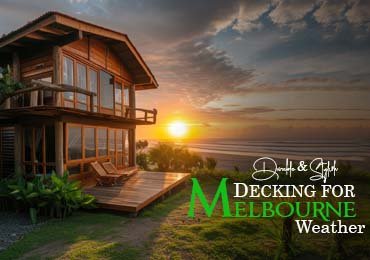
Lawn Mowing Tips for Melbourne Gardens: Achieving a Healthy and Beautiful Lawn
In Melbourne, where the seasons can change in a single day, maintaining a healthy and vibrant lawn is both an art and a science. Whether you’re a seasoned gardener or a weekend warrior, mowing your lawn correctly is one of the most crucial steps to ensure your garden looks its best year-round. From understanding your grass type to timing your mowing sessions with Melbourne’s unpredictable weather, this guide provides everything you need to know to achieve a lush and beautiful lawn in this iconic Australian city. Why Mowing Matters More Than You Think Mowing isn’t just about keeping your lawn neat. It’s essential for: Encouraging denser growth Preventing weeds Improving drought tolerance Enhancing your home’s curb appeal Done improperly, however, mowing can damage your grass, invite pests, and increase water consumption. Understand Your Lawn Type: Warm- vs. Cool-Season Grasses Melbourne lawns commonly feature cool-season grasses such as: Fescue Ryegrass Kentucky Bluegrass In warmer northern suburbs or newer developments, you may also find: Buffalo Kikuyu Couch Grass Knowing your grass type determines: How often you mow How high you cut What equipment to use Lawn Mowing Tips for Melbourne’s Climate 1. Stick to the One-Third Rule Never cut more than one-third of the grass blade in a single mow. Removing too much stresses the plant and reduces its photosynthetic ability 2. Adjust Your Mower Height Seasonally Spring: Begin with a slightly higher setting to encourage deeper roots. Summer: Keep grass longer to shade the soil and retain moisture. Autumn: Gradually lower the height to prepare for winter dormancy. Winter: Mowing may not be necessary unless there’s continued growth. 3. Mow When Grass Is Dry Wet grass clumps, dulls mower blades, and can create an uneven cut. Late morning or early afternoon is ideal after the dew has dried. 4. Keep Your Blades Sharp Dull blades tear grass rather than slicing it, causing brown tips and inviting disease. Sharpen your mower blades at least once per season. 5. Change Mowing Patterns Avoid mowing in the same direction every time. Rotating patterns prevents soil compaction and keeps the grass growing upright. 6. Leave Clippings (Mulch Mowing) Leaving short clippings on your lawn can return nutrients to the soil and improve moisture retention—especially beneficial in Melbourne’s dry summer months. Frequency of Mowing in Melbourne Season Mowing Frequency Spring Weekly Summer Every 1–2 weeks Autumn Every 2–3 weeks Winter Monthly or as needed Watering Before or After Mowing? It’s best to water the lawn the day before mowing, not immediately before. Mowing dry grass ensures a clean cut. After mowing, wait a few hours before watering to avoid potential disease. Avoiding Common Mowing Mistakes Scalping the Lawn: Cutting too low can expose soil, increase weeds, and stress the turf. Bagging Every Time: Unless your lawn is too long or wet, let clippings decompose on the lawn. Mowing with Dull Blades: Causes jagged edges and brown spots. Ignoring Safety Gear: Always wear sturdy shoes and eye protection, especially with petrol mowers. Choosing the Right Lawn Mower for Melbourne Gardens Depending on your lawn size and budget, you may choose from: 1. Push Reel Mowers Eco-friendly, great for small gardens, and gentle on cool-season grasses. 2. Electric Mowers (Corded or Battery) Low maintenance, quiet, and ideal for mid-sized lawns. 3. Petrol Mowers Powerful and durable—best for larger lawns or uneven terrain. 4. Robotic Lawn Mowers A growing trend in Melbourne—automated, quiet, and efficient for tech-savvy gardeners. When to Edge Your Lawn Edging gives your lawn a polished look. For best results: Edge after mowing to maintain a crisp border. Use manual or electric edgers along driveways, paths, and garden beds. Lawn Care Beyond Mowing To support healthy mowing, consider: Aerating in autumn or spring to reduce compaction. Fertilising every 2–3 months using a lawn-specific formula. Top-dressing in spring with sand or compost to level the lawn and improve soil health. Sustainable Lawn Practices for Melbourne Given water restrictions and environmental concerns, consider: Drought-tolerant grasses Smart irrigation systems Rainwater collection for garden use Native grass alternatives These options reduce your water bill and support Melbourne’s sustainability efforts. FAQs: Lawn Mowing in Melbourne Depending on your lawn size and budget, you may choose from: Q1. What is the best height to mow grass in Melbourne? For cool-season grasses, aim for 5–7 cm. In hot summers, keep grass slightly longer to shade the soil. Q2. Can I mow after it rains? Avoid it. Mowing wet grass leads to clumping, uneven cuts, and can damage your lawn and mower. Q3. How often should I sharpen my mower blades? Ideally once every 20–25 mowing hours or once per season. Q4. Should I mow before or after fertilising? Mow before fertilising to ensure the nutrients reach the soil. Q5. Is it OK to mow during winter in Melbourne? Only if the grass is actively growing. Most cool-season grasses go dormant in winter. Conclusion A well-manicured lawn doesn’t require hours of work—it requires smart habits. By understanding Melbourne’s unique climate, your lawn’s grass type, and applying the right mowing practices, you can enjoy a thick, green, and healthy lawn year-round. Whether you’re maintaining a large backyard in Doncaster or a cozy front yard in Fitzroy, these tips will ensure your garden becomes the envy of the street. And remember—consistency is key! We love to hear from you Contact Us
- 19 May, 2025
- 7 min Read

Revitalize Your Lawn: The Power of Lawn Dethatching and Expert Mowing Services
If your lawn is looking a little tired—even with regular watering and mowing—it might be time to look beneath the surface. One of the most overlooked lawn care practices is lawn dethatching, and when paired with professional mowing services, it can bring your lawn back to life in no time. Let’s break down why these two services can make all the difference. What Is Lawn Dethatching—and Why Does It Matter? Over time, your lawn can develop a layer of thatch: a dense mix of dead grass, roots, and organic debris that sits between the soil and the green grass above. A little thatch is normal (and even beneficial), but too much can suffocate your lawn. Signs your lawn may need dethatching: Grass feels spongy underfoot Water runs off instead of soaking in Bare spots or thinning grass Increased pests or lawn diseases Lawn Dethatching removes that excess layer, allowing water, nutrients, and air to reach the roots where they’re needed most. The result? Healthier, greener, and more resilient turf. The Role of Professional Mowing Services You might think mowing is simple—but doing it right takes more than just cutting grass. The height, frequency, and pattern all impact lawn health. Professional mowing services ensure: Correct mowing height based on grass type Sharp blades for clean cuts (not tearing) Strategic mowing patterns to prevent compaction Regular scheduling for consistent growth Paired with dethatching, expert mowing helps promote even growth, strengthens root systems, and gives your lawn a clean, polished look. When to Dethatch and Mow for Best Results Timing is key for both dethatching and mowing. Here’s a general guide: Best Time to Dethatch: For warm-season grasses: Late spring to early summer For cool-season grasses: Early autumn or early spring Mowing Tips Post-Dethatching: Wait a few days after dethatching before mowing Avoid cutting more than one-third of the grass height at once Water deeply to support recovery Use Cases: Who Benefits Most? While dethatching isn’t a weekly necessity, it's ideal for: Lawns with heavy foot traffic Properties with thick, patchy grass Gardens recovering from seasonal stress (heat, frost) Homeowners preparing for landscaping upgrades Why Trust a Professional Team Like Sky Nature? At Sky Nature Landscaping Services, we treat every lawn like our own. With years of hands-on experience across Sydney’s diverse landscapes, we know when your lawn needs a little TLC—or a full reboot. We combine tailored dethatching techniques with precision mowing services to keep your outdoor space lush, healthy, and picture-perfect. While the metaverse has faced setbacks, it is far from dead. The industry is shifting focus towards practical applications, including:
- 02 May, 2025
- 3 min Read

Garden Landscaping Trends in 2025 You Should Try
Landscaping in 2025 isn’t just about having a good-looking yard — it's about creating a space that reflects your lifestyle, supports local ecosystems, and adapts to changing climates. Whether you're starting fresh or thinking about a backyard upgrade, these garden landscaping trends are worth exploring this year. Here’s what’s shaping outdoor spaces across Australia — and how you can bring these ideas to life. 1. Climate-Responsive Landscaping As heatwaves and unpredictable rainfall become more common, water-wise gardens are no longer optional — they’re essential. What’s trending: Drought-tolerant native plants like Kangaroo Paw, Lomandra, and Grevillea Smart irrigation systems with weather-based scheduling Gravel or decomposed granite paths that reduce runoff This isn’t just about sustainability; it’s about reducing maintenance while keeping your outdoor space lush all year round. 2. Edible Landscapes: Function Meets Beauty In 2025, more homeowners are blending form and function by growing food alongside flowers. Think herbs in vertical planters or raised veggie beds that double as garden dividers. Popular integrations: Mixed garden beds with rosemary, lavender, and ornamental kale Fruit trees used as privacy screens Chic chicken coops or compost bins that blend into the design It's a great way to stay connected to nature — and your dinner ingredients. 3. Outdoor Living Spaces That Actually Get Used Gone are the days when a patio meant a slab of concrete and a lonely BBQ. Modern landscaping in 2025 embraces full outdoor rooms tailored to how you live. Ideas to try: Sunken fire pit zones with built-in seating Pergolas with retractable canopies and climbing vines Outdoor kitchens complete with prep space, lighting, and mini-fridges If it’s inviting and practical, you’re more likely to use it — whether it’s for entertaining or your morning coffee. 4. Low-Mow, Eco-Friendly Lawns Lawns are shrinking, but they’re not disappearing — they’re just evolving. Smart swaps include: Native grass blends that require less water and mowing Creeping ground covers like Dichondra or native violets Artificial turf in compact zones (ideal for pets or shaded areas) These choices reduce upkeep while supporting local pollinators and biodiversity. 5. Sensory Garden Elements In 2025, landscaping goes beyond the visual. More designs are integrating sensory experiences — perfect for mindfulness, accessibility, and family-friendly spaces. Incorporate elements like: Soft-textured plants and rustling grasses Water features for soothing sound Fragrant blooms like jasmine, gardenia, or lemon myrtle This is landscaping that invites you to slow down and engage with your environment. 6. Tech-Integrated Landscaping Technology is quietly transforming outdoor design — not with flashy gadgets, but smart solutions that make your garden easier to manage. Examples include: Smart lighting systems you control from your phone Robot mowers for consistent, quiet trimming Weather-based irrigation that adjusts automatically It’s all about convenience without compromising style or sustainability. Use Cases: Who Should Try These Trends? Busy professionals: Low-maintenance, smart features that save time Families: Edible gardens, safe play areas, and interactive spaces Eco-conscious homeowners: Native plants, water-saving systems, and wildlife-friendly designs Entertainers: Comfortable outdoor zones designed for socialising Think of your garden as an extension of your home. Before making changes, consider how you want to use the space — and what kind of atmosphere brings you joy. If you're unsure where to begin, a professional landscaper can help you visualise the possibilities, pick suitable plants for your climate, and avoid costly mistakes.
- 27 April, 2025
- 4 min Read

